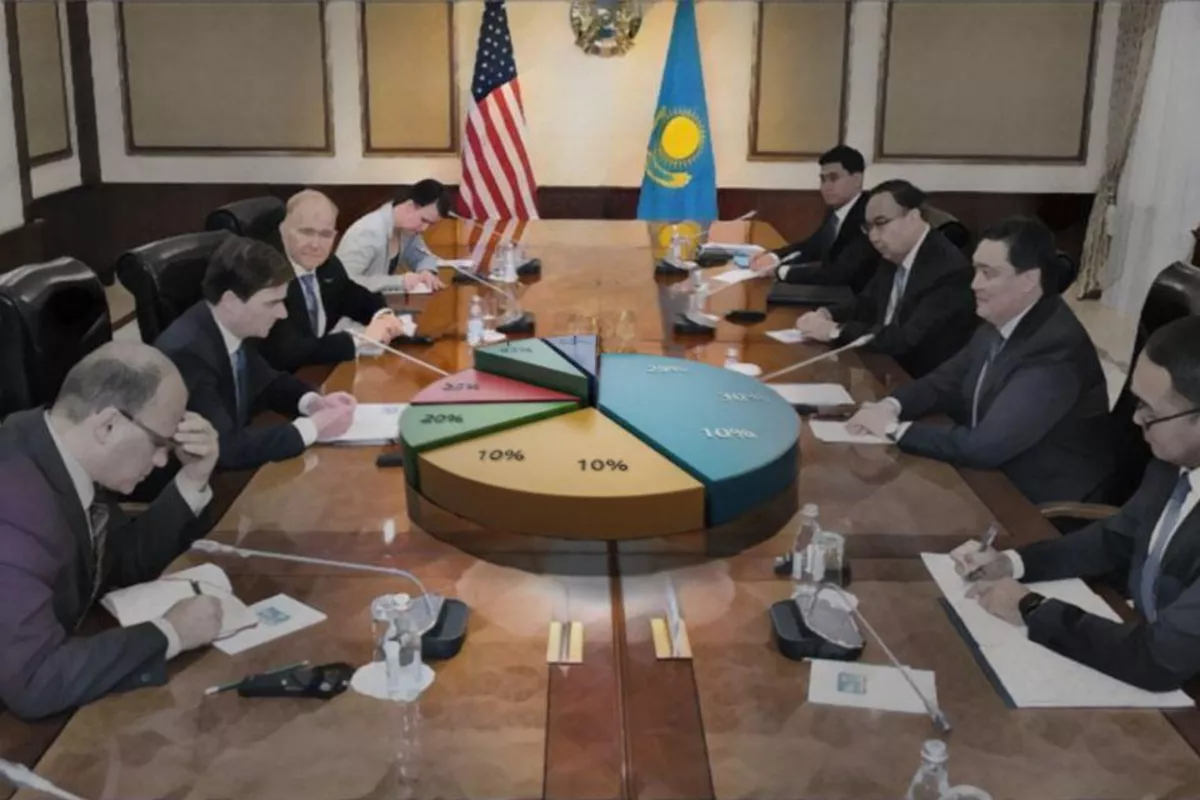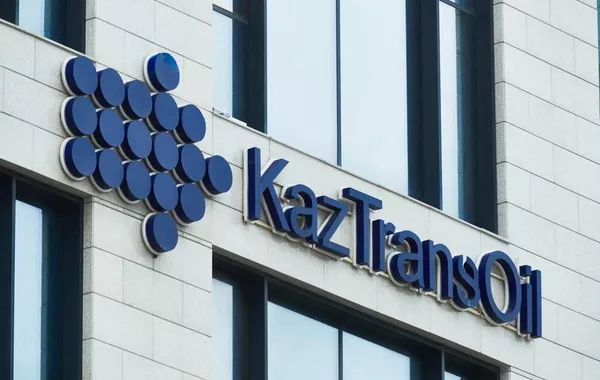
Image: TCA, Aleksandr Potolitsyn
When the United States announced a 25% tariff on selected imports from Kazakhstan, effective August 1, it provided little explanation, offering only a vague reference to restoring the trade balance.
At first glance, this seemed routine, indeed almost perfunctory. However, the timing, context, and symbolic weight of the move suggest otherwise. Kazakhstan’s exports to the U.S. are modest, and key commodities are unaffected, yet the signal was received clearly in Astana, The Caspian Post reports citing foreign media. What the Tariff Means in the Broader PictureIn the current phase of the international system’s evolution, tariffs no longer function solely as instruments of commercial redress. They have become vectors of strategic pressure, deployed to influence positions in a broader geopolitical context. From this perspective, Kazakhstan appears less as a trade partner than as a node within a larger and shifting strategic-connectivity network.
To interpret the tariff imposed by the United States on Kazakhstan as a bilateral irritant would be to miss its deeper significance. The target may be marginal in economic scale, but the symbolism is central. What is at stake is not merely the movement of goods, but the movement of expectations. What is at issue is how middle powers such as Kazakhstan read global cues and signal their response. The tariff is a point of entry into an evolving geoeconomic pattern.
Kazakhstan’s answer to the American move thus becomes an exercise in managing uncertainty under shifting rules. Astana has moved quickly by dispatching a delegation, issuing public reassurances, and subtly shifting its narrative. This is not a crisis for Kazakhstan, but it is not something that can be ignored either. What seems to have triggered the tariff is not the trade volume, but the context.
Kazakhstan’s longstanding ties with both Russia and China have complicated its attempts to preserve its autonomous balance in a tightening global field. The U.S. move may be part of a wider American effort to pressure states seen as too hesitant or too exposed. Kazakhstan’s early response is thus less a tactical correction than a move to preempt misunderstanding.
Background: A Cascade of Tariff Announcements
The tariff targeting Kazakhstan came at the end of a months-long sequence of trade announcements that began to accelerate in early 2025; it was not an isolated action. On April 2, under the now-familiar slogan of restoring reciprocity, the Trump administration unveiled a broad tariff package affecting more than 180 countries at a base level of 10%. Russia and Belarus were notably untouched, but Kazakhstan was singled out for a rate of 27%. No one could quite justify why, and Washington did not seem interested in explaining the move.
On July 7, Astana received a second notice: a revised tariff, now fixed at 25%, would take effect on August 1. This replaced the earlier measure and applied to a more specific set of goods. Without mentioning Kazakhstan by name, President Trump followed with a comment on social media about restoring “balanced flows” and correcting “distortions.”
More than twenty other countries - an eclectic list including Brazil, Japan, Laos, Mexico, and others - received similar notices around the same time. The criteria were opaque, with rates ranging from 20 to 50%. In most cases, there was no known dispute. What these countries seemed to share was some vague perception in Washington that they had failed to realign themselves with evolving U.S. expectations - whether on trade, supply chains, or political posture.
Kazakhstan’s inclusion in this group stood out, all the more so given its limited trade volume with the U.S. In 2024, its total exports to the American market were less than one billion dollars, most of which were concerned with commodities exempted from the new tariff. What remains is a small set of industrial exports, plus the question: Why now? The answer likely lies in the pattern of the American tariff policy, in which Kazakhstan is only one of many parts.
Tariffs, Rules, and Institutional Risk
Kazakhstan’s most significant shipments - crude oil, uranium, ferroalloys, and silver - are exempt from the new tariff. These four categories alone accounted for over 90% of total exports to the U.S. in 2024. The new tariff applies only to a narrow segment of Kazakhstan’s exports to the United States, mainly lesser-known industrial items such as steel pipes, specialty chemicals, and certain machine parts.
The real significance of the tariff lies not in revenue loss but in rules-based issues. Kazakhstan joined the World Trade Organization (WTO) in 2015, and WTO members make commitments to stability, predictability, and non-discrimination in market access. The U.S. tariff, by contrast, was announced unilaterally, without consultation, and without any WTO process. Punitive tariffs targeting specific countries outside a formal dispute resolution framework may be incompatible with the obligations assumed under the WTO’s Most Favored Nation (MFN) principle.
For Kazakhstan, the question becomes a tangible reputational risk. The country has heavily invested in its image as a rules-respecting member of the global trading system, so this is not an abstract concern. The WTO’s Director-General has warned that such selective bilateral tariff approaches threaten the core MFN foundation of global trade law.
The country has spent the past decade cultivating foreign capital, especially in infrastructure, mining, and logistics. If American tariff policy starts to look erratic, then other governments and firms may begin building risk premiums into their Kazakhstan strategy.
Kazakhstan’s Countermoves and Strategic Repositioning
In this context, diplomatic action functions as a counter-signal aimed at re-establishing interpretive control. Within days of receiving the July 7 notice, the government of Kazakhstan announced that it would send a senior delegation to Washington. The purpose of this move was to reframe the situation. Kazakhstan was not looking for a public concession but rather, at a minimum, to be heard.
Part of the delegation’s strategy is to shift the conversation away from tariffs and toward strategic value. Kazakhstan has quietly become a meaningful player in the global supply of critical minerals. Its deposits of rare-earth elements, particularly in the Karaganda region, are not to be neglected. Western companies have already begun exploratory partnerships, and it is not impossible that they can tip the conversation in Kazakhstan’s favor.
At the same time, Astana has already begun to assess potential fallout at the domestic level. The exporters affected by the tariff are relatively few in number, and none appear to be existentially threatened. The government may still offer them targeted relief such as export credits, transport subsidies, or tax offsets. Legal consultations are reportedly underway to explore filing a WTO case; this, however, would be a slow process, and likely only a symbolic one.
Possible Scenarios and Their Implications
The tariff’s immediate impact is modest, but its symbolic threshold is real. It introduces friction at a moment when Kazakhstan is seeking a stable economic and diplomatic orientation without crisis. Three scenarios are plausible:
At present, the unfolding of events will control the narrative. The test for Kazakhstan lies not in reversing the tariff itself, but in managing its constraints with sovereign agency. Its ability to navigate this space will determine the trajectory of its profile as a strategic regional actor.
Share on social media
